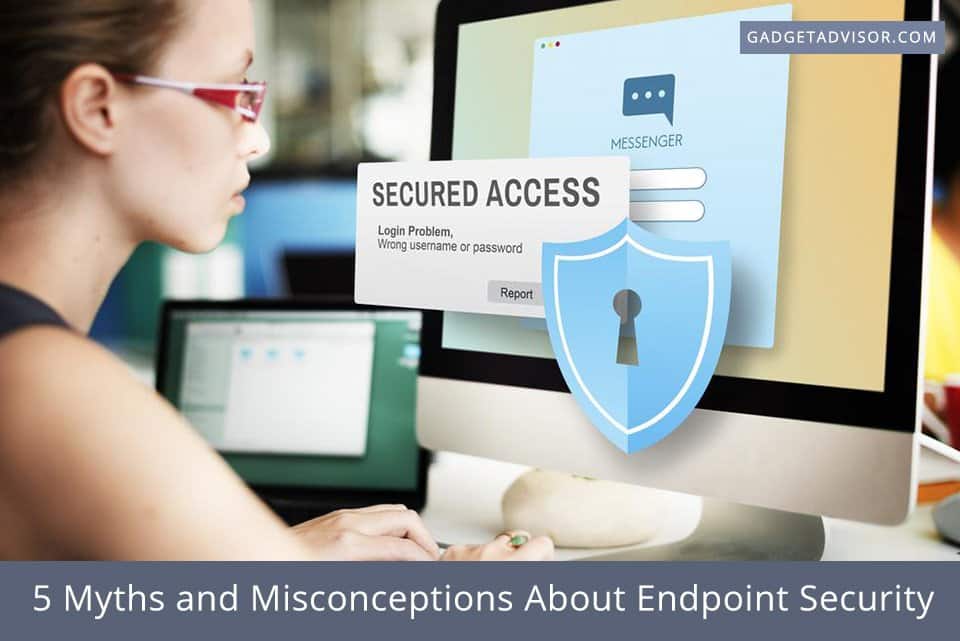For any security strategy to be successful, endpoint security must be taken into consideration. Protecting the network isn’t enough; you must also secure all devices that connect to the network in order to prevent harmful malware from finding an entry point, and to thwart hackers who may use unsecured devices as a means of gaining access.
However, endpoint security is not as simple as adding corporate antivirus protection to every machine in the office and expecting the network to be protected. It’s actually a bit more complex than that — but unfortunately, many companies believe the following myths and misconceptions about endpoint security and thus leave their networks vulnerable.
1. You Know Where All of Your Endpoints Are
Many companies fall into the trap of thinking that they are 100 percent protected because they have endpoint protection on every computer, mobile device, and other connected device in the office. However, there is almost always an endpoint that has been forgotten, as any device that can attach to the corporate network is an endpoint. Experts note that if a device can access the internet or transfer files, then it needs to be protected — or you need to have security in place to control their access to your network.
2. Macs Are Always Safe
There has long been a perception that Mac computers are largely impervious to viruses and other security risks. While that may have been at least mostly true at one point, the simple fact is that more people are buying Macs, and not installing antivirus software on them, has made them an attractive target for cybercriminals. The truth is, Macs can be infected with viruses, or at the very least, serve as a “carrier” for other malware without a user even realizing it. Therefore, opting to become a Mac-based business is not a security strategy, as even those machines need protection.
3. Mobile Devices Should Be Treated Separately
Despite the fact that mobile devices have become ubiquitous in most businesses, there are still some who believe that mobile security is an entirely different animal when it comes to security. In short, some companies still do not treat mobile devices as endpoints, even though they are essentially handheld computers. After all, most mobile devices include a great deal of user information, passwords, corporate data, and applications that are the same as those on laptops and desktop computers. It’s important that mobile devices be treated as endpoints, with the same level of attention to security configurations, usage policies, and vulnerability management.
4. Every Device Connected to the Network Must Have Endpoint Security
While endpoint security does begin with the device itself, that doesn’t necessarily mean that you have to have endpoint protection on every single device that connects to the network. For many businesses, this is simply not practical or possible. Instead, companies should look for a security solution that monitors and analyzes the traffic from all of the devices on your network can detect when an infected device has connected and is attempting to infect other devices — and stop that from happening.
That being said, it is important to use an endpoint management system on those machines that could provide access to your most valuable data. Protect the most valuable assets, and develop policies and procedures that will limit access to your network. For example, do not allow sales reps to use USB devices on your company’s devices, or maintain a specific guest network that does not allow access to the most valuable data.
5. Endpoint Security Isn’t Necessary for Virtual Machines.
Some businesses believe that their virtual networks are safer than the physical networks. This is not true. Because physical and virtual networks store data in the same way, a virtual network can serve as a doorway to a physical server, and all of the data and virtual servers on it. Hackers are often able to use the same code that they used to gain access to one virtual machine to access all of the other virtual machine as well, exploiting vulnerabilities and stealing data. Bottom line? Virtual machines must have endpoint protection as well.
As corporate networks continually expand and are accessed by devices and access points beyond the connected desktop computer in the office, the need for endpoint security is only going to increase. By understanding what is actually involved in endpoint security, and avoiding common myths, you’ll have a better chance at keeping your data out of criminals’ hands and preventing the loss of time and money that comes with a data breach.

